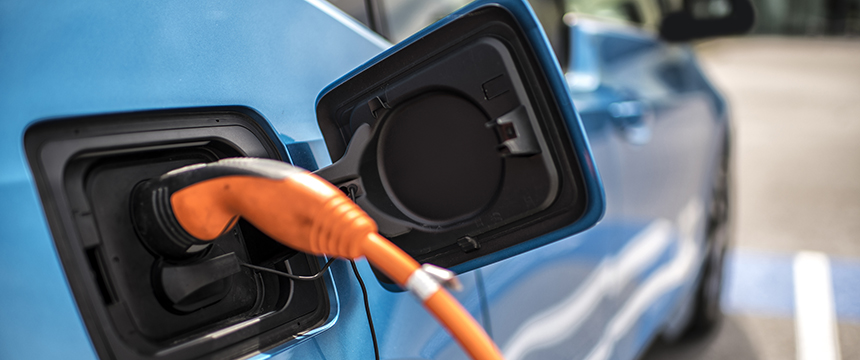For EV Adoption, How Important Are Proposed EPA Vehicle Emissions Regulations?

This blog was republished by POWER Magazine on August 22, 2023.
The U.S. Environmental Protection Agency (EPA) in April of this year announced proposed regulations to tighten restrictions on tailpipe emissions for light and medium-duty vehicles and greenhouse gas emissions from heavy-duty vehicles beginning with the 2027 model year.
In order to meet the new requirements, the proposed regulations could effectively require automakers to produce zero-emission vehicles that would conservatively account for at least 40% of their annual sales by 2030.
Questions remain about the requirements set forth in the proposed regulations, whether the requirements are technologically achievable, and at what cost to the economy, industry, and society at large. Comments to the heavy-duty rule were due June 16, 2023, and comments to the light and medium-duty rule were due July 5, 2023. Thousands of comments were submitted on the proposals during the comment period, running the full spectrum from criticism that the proposals are too lax, to criticism that the proposals are too stringent—and everything in between.
The proposed regulations together include specific requirements for automakers to reduce their greenhouse gas emissions and criteria pollutant emissions such as particulates, or PM, and nitrogen oxides (NOx).
These standards apply to individual vehicles, but given provisions for average, banking, and trading, automakers may meet the requirements on a fleet level. Without a major technological breakthrough in emission control technology for internal combustion engines (which does not appear to be on the horizon), compliance with the new regulations would mean selling a greater number of zero-emission vehicles in order to lower the average fleet emissions.
Zero-emission vehicles effectively means electric vehicles (EVs), and while this includes hydrogen fuel cell EVs and other technologies, battery EVs constitute the bulk of the EV market. Just how many EVs automakers will have to sell will depend on a variety of factors, but early estimates range from 40% to 60% of total sales, up from 6% to 8% currently.
We take no position on whether the EPA’s de facto EV mandate is good or bad policy. We are addressing only its viability and impact. And the mandate is ambitious—even by the most conservative estimates, to meet that goal, the number of EVs sold in the U.S. will have to increase by a factor of five over the next 10 years.
The immediate and obvious response to many concerns by critics in support of the EPA goals is “Norway.” More than 80% of new vehicle sales in Norway are EVs already, and this has been the case for several years. The total fleet in Norway is greater than 50% electric. Norway passed the EPA’s 40% EV target in 2017. Neither the Norwegian electrical grid, economy, nor society appears to have suffered. This appears to be evidence that it is possible to have a highly electrified national vehicle fleet.
Norway made this transition quickly—10 years ago EVs accounted for fewer than 6% of sales—and at a time when there were far fewer options for EV buyers than at present.
It is fair to ask—how does the U.S. compare to Norway for implementing such these regulations? The clearest (and most obviously legitimate) difference is one of size. Norway’s population is 5 million, and Norway’s EV expansion was no strain on the global supply chain. Electrification of the U.S. vehicle fleet will be vastly larger and need to cover a much larger geographical area.
So what then of the technology, and the supply chain? Is it possible to achieve the EPA targets at all, regardless of sale mandates and incentives?
We do not know. What we do know is the proposed EPA requirements are not the only legal consideration for auto companies.
California law already requires that all new cars and light trucks sold in California must be zero-emission by 2035, and several other states, including Massachusetts, New Jersey, New York, Oregon, and Washington, have committed to adopt California’s requirements. These states together account for at least 25% of American car sales.
Beyond state law, it is important to recall that the supply chain is a global supply chain. And the global supply chain is responding to a global market. Many countries have implemented EV mandates, goals, and incentives. Most notably, the European Union will require 100% emission-free vehicle sales by 2035—far more aggressive than the 60% figure proposed for the U.S.
China has not publicized a specific EV target, but has already achieved 25% of sales and is growing fast. China is showing every sign of intending to increase EV expansion, and is in an excellent position to do so. China is the largest manufacturer of EVs, and its government’s command structure allows it to quickly implement policies.
Beyond the potential for new EPA mandates for the American market, EV manufacturing and supply chain capabilities will also be impacted by a much broader set of factors, including global demand. Other forces, both domestically and globally, are driving the auto industry toward the same result. Ultimately, sales of EVs in 2030 and beyond will likely be determined by many factors, including the proposed EPA regulations—but while the proposed EPA regulations are important, they will not alone define the global EV supply chain, whether or not they become effective.
Factors such as: the ability of the supply chain to keep up; the market developing (or not developing) for EVs in the U.S.; manufacturers’ ability to price EVs in line with legacy automobiles in light of differing supply challenges; and so on will also go a long way to determining whether the EPA’s current targets are viable.
In any event, even if the U.S. market misses targets, and say only hits 30% instead of 40% EV sales, such “failure” still means that tailpipe and greenhouse gas emissions would be drastically reduced while domestic EV sales increase manyfold. Goals can succeed even as they fail.
You can read the original version of this article at powermag.com

